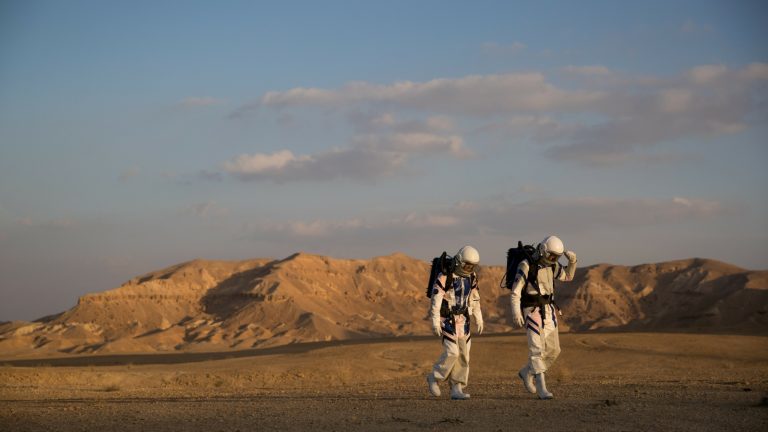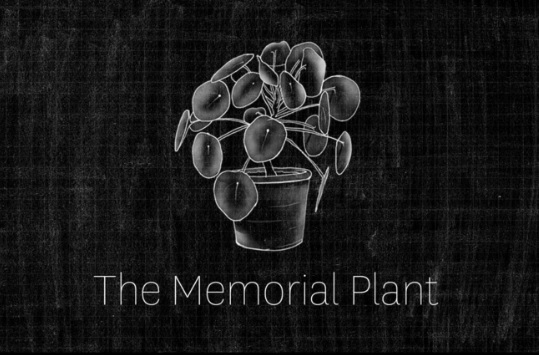
Synthetic biology could create living memorials on Mars. Credit: Yonatan Sindel
When David Bowie died in 2016 the world wept. He was widely regarded as one of the greatest musicians of all time. And his song ‘Life on Mars’ was arguably his best work. His presence is missed by millions of people to this day.
Imagine then, how fitting would it be if Bowie could be commemorated with a living memorial on the very planet he sang about? A true star man.
Like Mars itself, the idea is not so far-flung. Using the wonders of synthetic biology, Bowie’s memories – his image, his voice, his songs – could be uploaded into a living organism, like a tree. Using a digital interface (a tablet, or a smartphone, for instance) they could then be called upon by fans, friends and family to remember and pay honour to his life.
An oak tree that could play Bowie’s ‘Life on Mars’. Or ‘Starman’. To an audience, on Mars, 100 years from now.
Sounds crazy, right? Well, hear us out.
A future science platform
Synthetic biology involves the design and construction of new, standardised biological parts and devices. And getting them to do useful things. Parts are encoded using DNA and assembled either in a test tube or in living cells. They are then applied to deliver many different kinds of outcomes.
Our Synthetic Biology Future Science Fellow, Briardo Llorente, of Macquarie University, looks at how synthetic biology could be used to grow crops on alien planets like Mars. This could be useful once humanity begins to populate the solar system and beyond.
Interesting enough. So how does that give us Martian David Bowie memorials?
About a year ago, Briardo was approached by the University of Technology Sydney to mentor a class with a specific purpose: competing in, and taking out a prize at, the BioDesign Challenge in New York. The team at UTS had read about Briardo’s work on our blog and wanted to see how synthetic biology could be applied in new ways. Along with two teachers, Jestin George and Mark Liu, and two other mentors, he oversaw a six-month course that would see students form teams. They then came up with concepts that would ultimately be entered into the Challenge.
The Martian Memorial Plant was the winning concept. What makes it particularly cool is that the creators of this concept – Bronwyn Hallis, Charlie Yuncken, and Amanda Han – are not scientists. They are an interdisciplinary team of designers. They drew on their experience in art, fashion and architecture to put a new spin on synthetic biology applications. Their project explored how synthetic biology could be integrated into intensely human experiences, such as death and grief.
So why Mars? And why in the future?
“We considered how our design could strengthen the cultural practice of mourning on Mars, given that any new Martian colony would begin to develop its own new rituals and cultures,” says Bronwyn.

The Memorial Plant can be engineered to create a living memorial for deceased loved ones.
Synbio in space
Synthetic biology will be a crucial component of the human future in space. It could improve human’s longer-term habitation efforts in space. But it also has the potential to make non-Earth locations more suitable for sustainable habitation – emotionally as well as physically.
Take the Memorial Plant: a plant engineered to perpetuate our emotional connection with our deceased loved ones.
According to Charlie, the process of developing the Memorial Plant would start by collecting and documenting memories of a deceased person. This would be as digital data made up of the binary code, 1s and 0s.
Using an algorithm, the data from the memory – for example, a song – would be converted from digital binary data to biological data of DNA molecules.
These ‘memory genes’ would be synthesized and assembled into a synthetic chromosome in the Memorial Plant: a living vessel for the memory of deceased Martian (or musician) humans.
Martians could care for the memory of their deceased loved one by watering the plant, fertilising the soil, or turning on a warm light – and each type of sensory stimulation could recreate a different ‘memory.’
This would allow Martians to retrieve the memories of their deceased loved ones through interacting with the Memorial Plant, which functions as a living hard-drive.
“The memories are literally living on inside the Memorial Plant,” Amanda said.
The judges agreed. The team took out ‘best presentation’ at the Challenge, beating out entrants from Harvard, Columbia and Penn universities.
So as the Starman said, “I don’t know where I’m going from here, but I promise it won’t be boring.” We definitely agree.


22nd July 2019 at 5:40 pm
All very clever but it makes me shudder.
Let humans invade “mars-nullius” and, whether or not there are existing lifeforms present, before people even get there they are planning to introduce alien (earth-sourced) biota. British settlers brought sheep, rabbits, camels, prickly pear, cane toads, lantana, amex etc. as well as smallpox, influenza and countless other microbes to Australia. In similar ignorance, aspiring Martian immigrants are scheming to release all sorts of weird biota in the hope that these will survive and proliferate on Mars.
That’s not crazy, its deliberate sabotage.